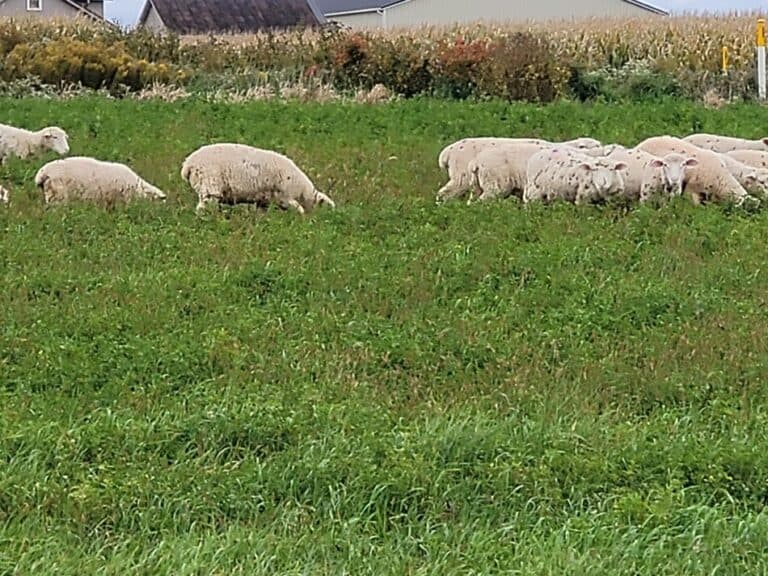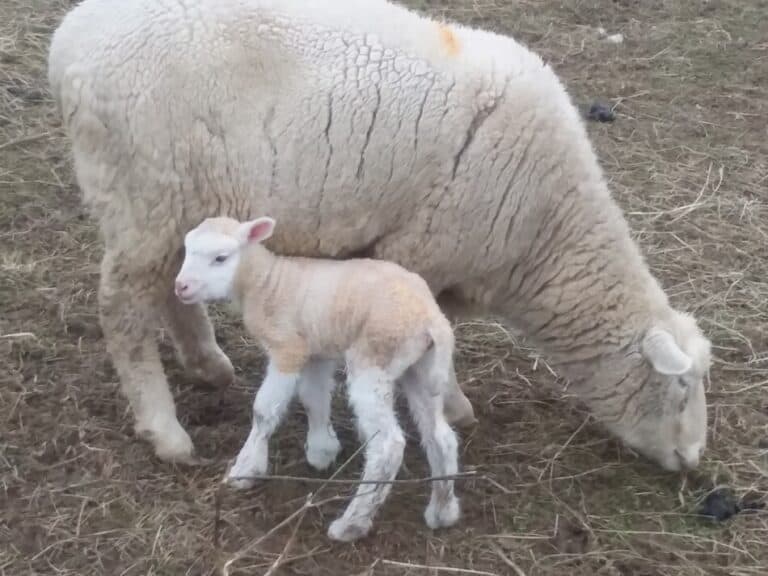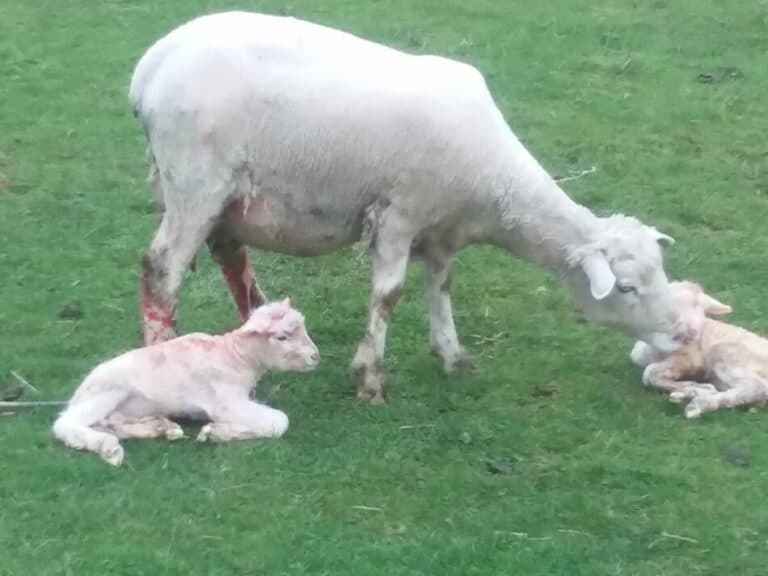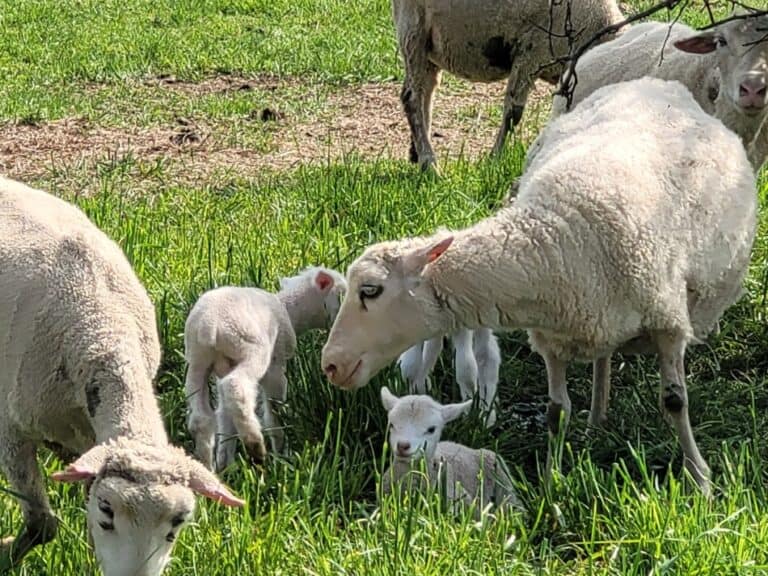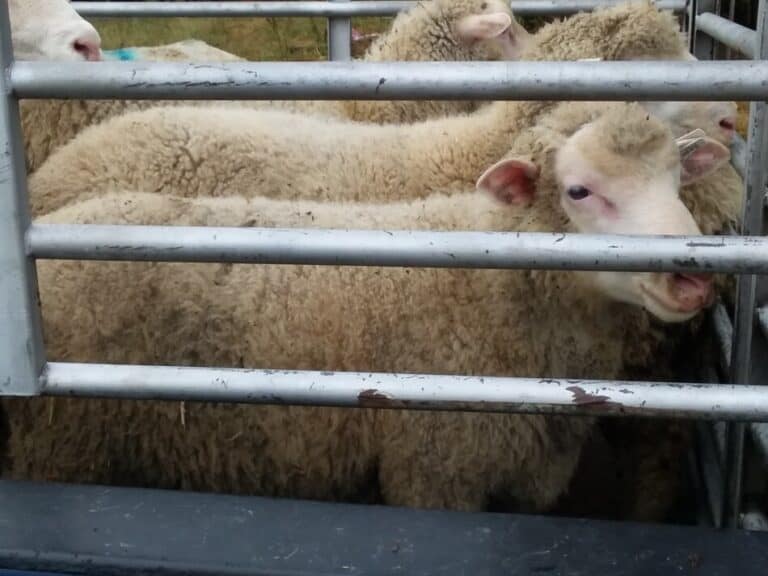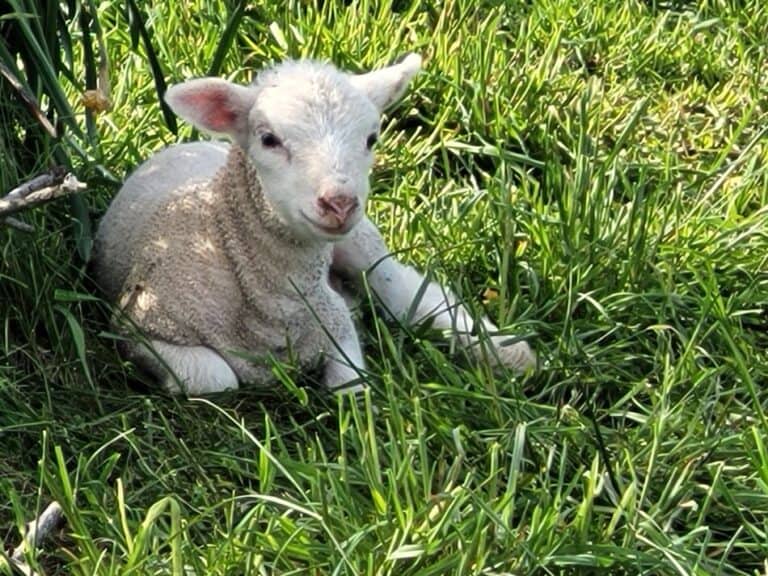Best Breeds Of Sheep For Wool (Fine, Medium, Long & Specialty)
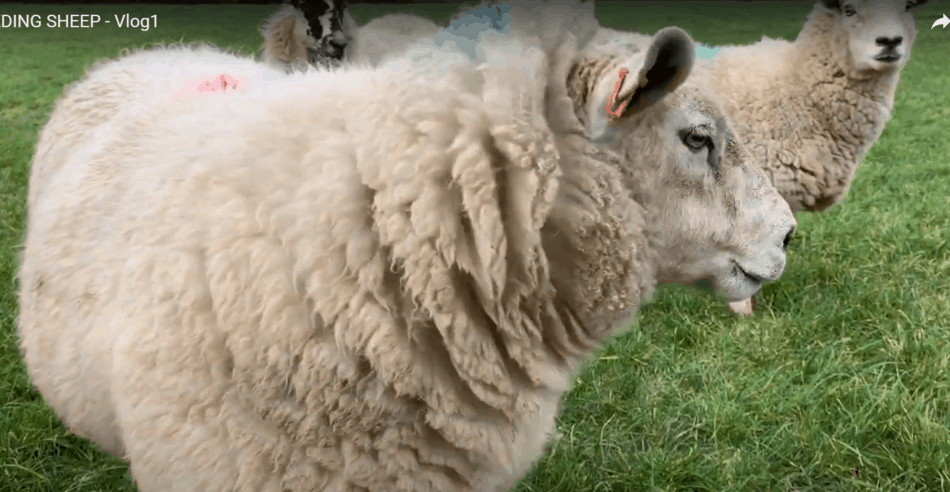
Raising sheep is becoming much more popular, and, of course, sheep are known for their wool production! With all the breeds of sheep available and the different types of wool, choosing a flock for wool can be quite a task.
For someone looking to get started with sheep, what are the best breeds of sheep for wool?
The best breeds of sheep for commercial wool production are fine wool breeds: Cormo, Debouillet, Delaine-Merino, Merino and Rambouillet, which are all Merino based.
The best breeds of sheep for direct to customer sales are breeds that have specialty fleeces (fleeces that are very soft, easy to spin, or naturally colored) or have wool that will be in demand when made into wool products like yarn. Examples of popular sheep for specialty wool sales are Romney, Shetland and rare breeds.
If you want to raise sheep for wool as a hobby, you’ll need to either have customers for that wool or enjoy using the wool yourself. There are tons of choices will all manner of different fleeces!
However, if you are looking into selling commodity wool as an additional income for your farm, let me be upfront, wool sales will not make you much money.
You will be much better off, money wise, choosing a breed of sheep based on suitability to your area and how well those lambs fit the needs and wants of the local buyers.
Interested in learning to spin? Check out my Beginning Spinner Course at Woolmaven.com!
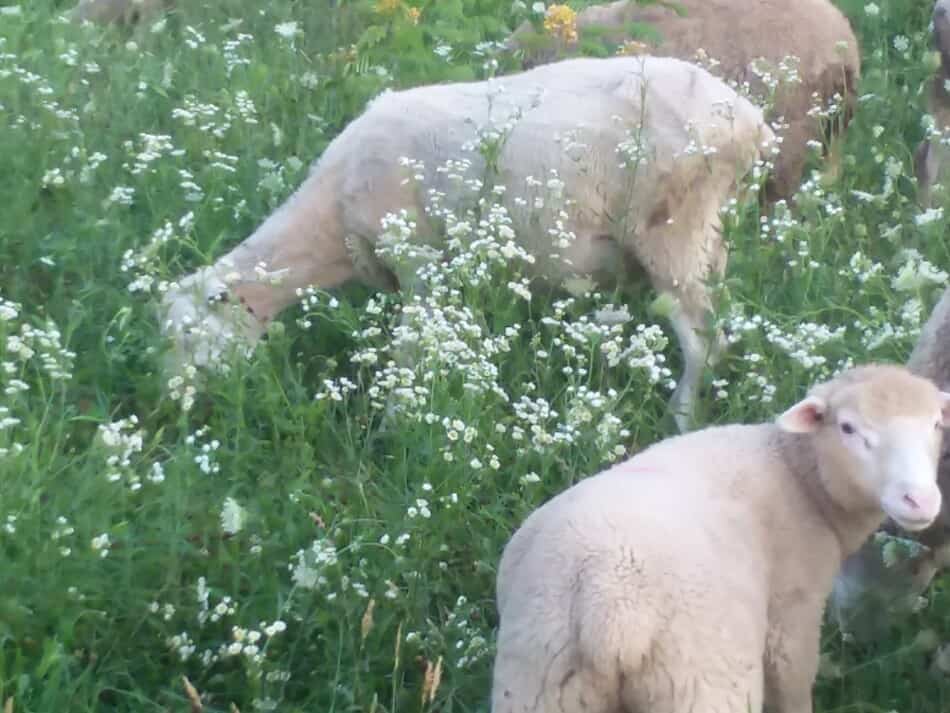
Raising Sheep For Profit goes into the income side of sheep. Look over the budgets and run your own numbers if you are considering sheep for an income.
Getting Started With Sheep As A Business goes over whether or not sheep will work for you.
Where To Sell Your Wool gives you the run down of places to sell your wool. Unless you have a specialty wool or a specific customer that you are direct selling to, wool is going to be more of a cost than an income for most sheep.
5 common fine wool sheep breeds
The 5 common fine wool sheep breeds in the U.S. are:
- Cormo
- Debouillet
- Delaine-Merino
- Merino, fine, medium and superfine (fiber less than 18 microns)
- Rambouillet
There are other breeds that have fine wool, but these 5 are the ones you are most likely to find.
Fine wool sheep breeds usually are Merino based
Fine wool is from sheep with fleeces measuring up to 22 microns, lower numbers, below 18, are superfine. Breeds that have fine wool are Merino based breeds.
Generally, sheep with fine wool are raised in dry parts of the country, for instance the western flocks are normally Rambouillet.
Fine wool sheep breeds have some commercial wool income
Of all the grades of wool, fine wool is the most valuable. How valuable, I don’t know. It’s tough to find a price for commodity wool and since that’s not the type of wool we have, I’m in the dark on this one.
Fine wool sells well direct to customers
If you are looking to direct sell to customers, you can get paid pretty well for all star fleeces. Here’s a shop on Etsy getting $16.28 for 4 oz. of a beautiful Merino fleece.
Since the average weight of a superfine Merino fleece is 6-9 pounds, this sheep has some high value wool!
I’m sure you have to skirt off some of the fleece, not all parts of a fleece are premium, but even if you could get 5 pounds of highly sought after wool, this sheep fleece has a retail value of $65.12 per pound or $325.60 for the fleece.
I picked a best case scenario here, this shop is selling very high quality wool from a coated sheep (that requires extra work) and is, of course, running the shop and fulfilling orders.
Here’s another shop on Etsy, selling raw fleeces Merino for $15.00 per pound. At an estimated fleece weight of 6-11 pounds and taking off a few pounds for skirting, this fleece is selling for $90-150 retail.
This past weekend I attended a local wool festival and was fortunate enough to buy a CVM (California Variegated Mutant) fleece, which is a naturally colored Romeldale, also a Merino derivative.
This is a lovely white to grey fleece that is fine, wonderful to work with and clean (no vegetable matter). I paid $65 for the 2.5 pound raw fleece. This was the last CVM they had, the others sold on the first day!
There are 10 common medium wool sheep breeds
The 10 most common medium wool sheep breeds in the U.S. are:
- Cheviot
- Columbia
- Corriedale
- Dorset
- Finn
- Hampshire
- Montadale
- Oxford
- Polypay
- Shropshire
- Southdown
- Suffolk
- Targhee (some individual sheep have fine wool)
- Texel
Medium wool has little commercial value
Most commercially raised sheep that are not range ewes will fall into the medium wool group. This is where our sheep fit, we have a mixed flock that has a Dorset/Polypay base. This year we got $0.05 per pound for the wool.
Commodity wool for this group is a money loser once you take out the price of shearing, which for us is $5.00 each since we have a larger flock of sheep. It would be more per sheep if our flock were smaller.
Medium wool is from 22-30 microns and is the most common wool outside of the large range flocks, which are normally fine wool sheep like Rambouillet.
Medium wool sheep breeds can be used by handcrafters
There are folks privately selling fleeces, especially colored ones, to handcrafters and getting anywhere from $50-110. Look up any of the breeds listed above on market places like Etsy to see what folks are offering up for sale.
Woolcrafters, especially handspinners love to use breed specific wool.
To me, as a handspinner as well as a sheep farmer, the main value of medium wool is that it is easy for a new spinner to learn with, as long as the wool is on the longer side and has little to no vegetable matter.
I see quite a bit of emphasis on trying different types or classes of wool and folks wanting to know the sheep breed and flock from which it was shorn.
Even for breeds like the black faced meat breeds, not something you normally would associate with wool, if you have a good clip that is chaff free there are folks that are interested in crafting with it.
Get someone who uses wool to give one of your fleeces a try and see what the wool works best for, then you’ll have a few project ideas for folks looking to try a new to them type of wool, like yours.
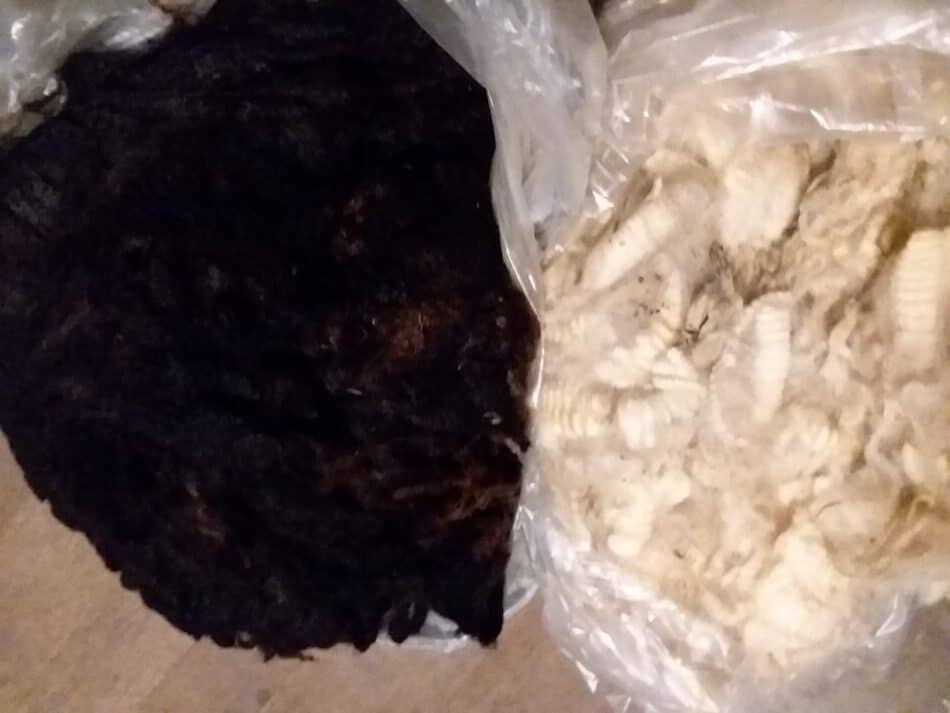
8 Long wool sheep breeds available in the U.S.
8 long wool sheep breeds in the U.S. are:
- Border Leicester
- Coopworth
- Cotswold
- Leicester Longwool
- Lincoln
- Romney
- Shetland (actually a medium wool, but popular with handcrafters)
- Wensleydale
For me, this is the wool that I like to work with the most, it is easy to spin, generally felts well and comes in all manner of different colors, perfect for anyone looking to work with wool that has a bit of flare to it!
As with the other categories of wool, look up the fleeces that are for sale on the online platforms and see what shepherds are providing and what fleeces are popular with shoppers.
At the same wool festival I also bought some Wensleydale and Teeswater, both in lock form and then some Gotland top. They were all lovely, clean, ready to spin and priced around $7-10 per ounce.
Long is used by handcrafters
Long wool is over 30 microns. This wool really has near zero commercial value but is what I think of as the most popular class for handcrafters wanting an easy to work with wool.
Natural colored wool is popular with handcrafters
Naturally colored sheep, wool, fleeces and wool products (yarn, roving, etc.) are very popular with handcrafters who like to work with wool that has color straight from the sheep.
Commercial value of natural colored wool is zero, the wool buyers do not want it. Natural colored wool is for specialty sales to handcrafters for knitting, spinning, felting, rugs, crafts, etc.
Specialty wool sales require more work from you
Some specialty wool farms are making quite a bit of money from their sheep with high demand fleeces. Be sure to check out what is needed to get these great fleeces to customers before you decide to go with direct wool sales.
A big deal with buying fleeces, even though they are usually skirted (the not so great parts sorted off) they can still have quite a bit of vegetable matter if the sheep are not carefully monitored or coated all year.
Are you willing to do the work it takes to keep these fleeces in top shape? If so, folks selling fleeces are getting $100+ per fleece by selling direct to customers.
Our shearer sells as shorn fleeces from his Icelandic flock for $50 each. He informs the buyer that there will be a bit of sorting off to do, and they sell out each year.
The crazy part here is, the Icelandic breed needs to be shorn twice per year, so that’s $100 per sheep from fleece income. Not too bad.
Sheep And Wool Festival goes over one of the great sheep and wool festivals held in our area. This is the place to go if you want to see what folks who are selling specialty wools are doing with their fleeces and their products.
I love naturally colored wool and get a kick out of spinning and knitting with it, you get such wonderful color throughout the yarn and the knitting!
Want to spin wool from your own sheep? Check out Woolmaven.com/Spinning Course!
Income from sheep wool, in general, is poor
As much as I enjoy the wonderful fleeces, to be upfront with you, even with direct to customer sales of specialty fleeces, you would still make more money with your sheep selling market lambs.
If you love working with wool and are looking into a hobby to please yourself, then, of course, get the sheep you with the wool you love!
If your main purpose for your flock is profit, look into sheep that will produce the best market lambs for your area and don’t worry about the wool.
Resources:
New Mexico State University: Wool Grades, chart on average diameter for sheep wool by breed
Grades And Lengths Of Grease Wool: Colorado University Extension, comparison of wool grading systems
